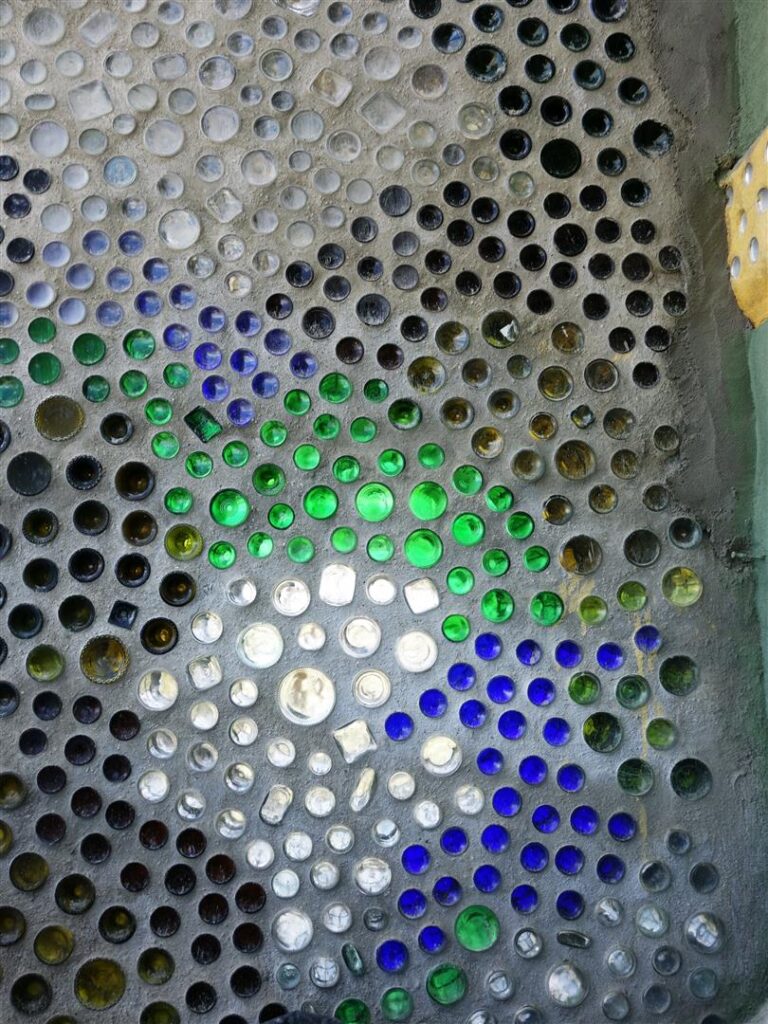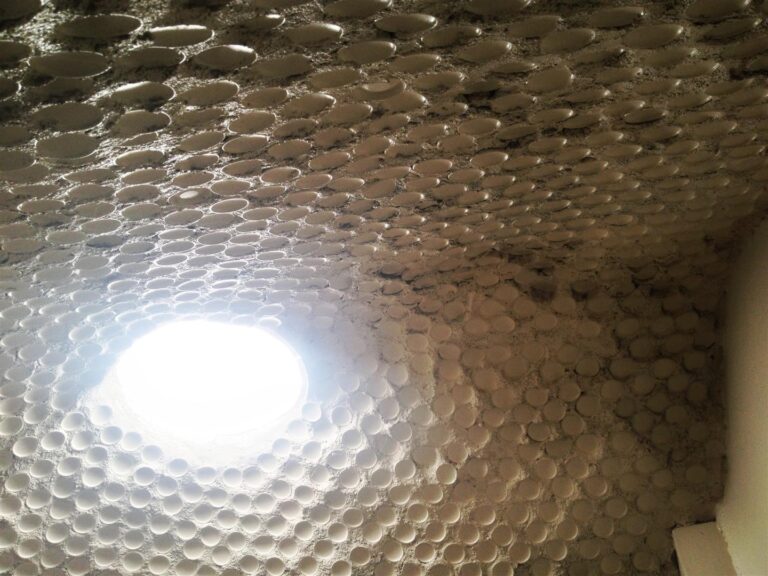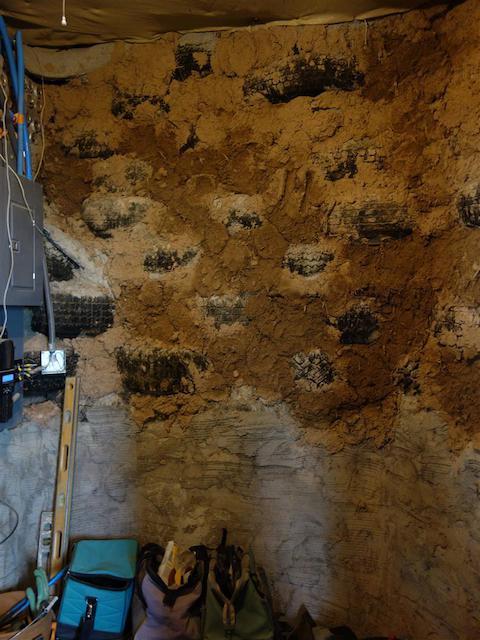Hacking The Earthship: An Interview With Rachel Preston Prinz
Rachel Preston Prinz Takes A Fresh Look At Sustainable Architecture


Behold the aesthetic possibilities of a well-designed bottle wall.
photo by Rachel Preston Prinz

Author and architecturally trained designer Rachel Preston Prinz

Stairs in a beautiful home in the REACH community
photo by Rachel Preston Prinz

Trouble in paradise: Aluminum cans are a common material in Earthship interior walls. But they’re also prone to problems like the mold you see here.
photo by Rachel Preston Prinz

DIY yes, but DIY incorrectly in an Earthship, and you might end up with a leaking back wall like this one.
photo by Rachel Preston Prinz








